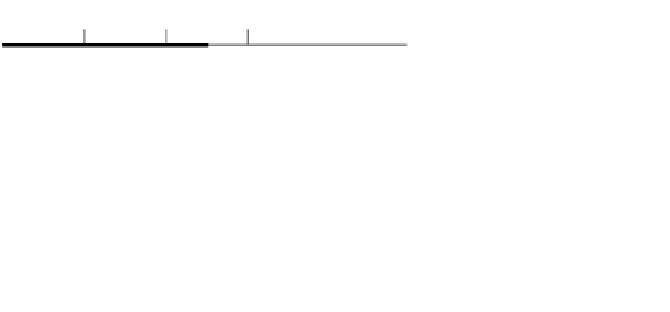Graphics Reference
In-Depth Information
sup, inf and completeness
79 Every infinite decimal sequence consists entirely of terminating
decimals, which are rational numbers. If (
a
) is an infinitedcimal
sequence, what is the least upper bound of the set of terms of this
sequence? Deduce that if every non-empty set of real numbers
which is bounded above has a least upper bound, the completeness
principlemust follow.
80 We seek a least upper bound for a non-empty set which is bounded
above.
Let
X
be a non-empty set of real numbers with an upper bound
u
.
Let
x
X
. Then
x
u
.
If
x
is an upper bound for
X
, then
x
is the greatest member of
X
and
so
x
is the least upper bound, and the search ends.
1
2
(
x
+
u
)
x
u
1
2
(
x
+
u
)
x
u
So suppose
x
is not an upper bound for
X
.Let
l
x
and
u
u
.
Now consider the number
d
(
l
u
)/2.
If
d
is not an upper bound for
X
,let
l
d
and
u
u
.
If
d
is an upper bound for
X
,let
l
l
and
u
d
.
So
l
l
u
u
, and
u
l
(
u
l
)/2.
Repeat this process to define sequences (
l
), (
u
) inductively such that
l
l
u
u
, where
u
is an upper bound for
X
,
l
is not and
u
l
(
u
l
)/2.
(i) Why is the sequence (
l
) convergent?
(ii) Why is the sequence (
u
) convergent?
(iii) Why is the sequence (
u
l
) null and why arethelimits of
) equal (to
s
, say)?
(iv) By considering the sequence (
u
(
l
) and (
u
) show that thelimit,
s
,isan
upper bound for
X
. (For any
x
X
,
x
u
for all
n
,so
x
s
by the closed interval property, qn 3.78.)
(v) By considering the sequence (
l
) show that thelimit is the
least upper bound for
X
(from qn 65).
So any non-empty set of real numbers which is bounded above has
a least upper bound.


